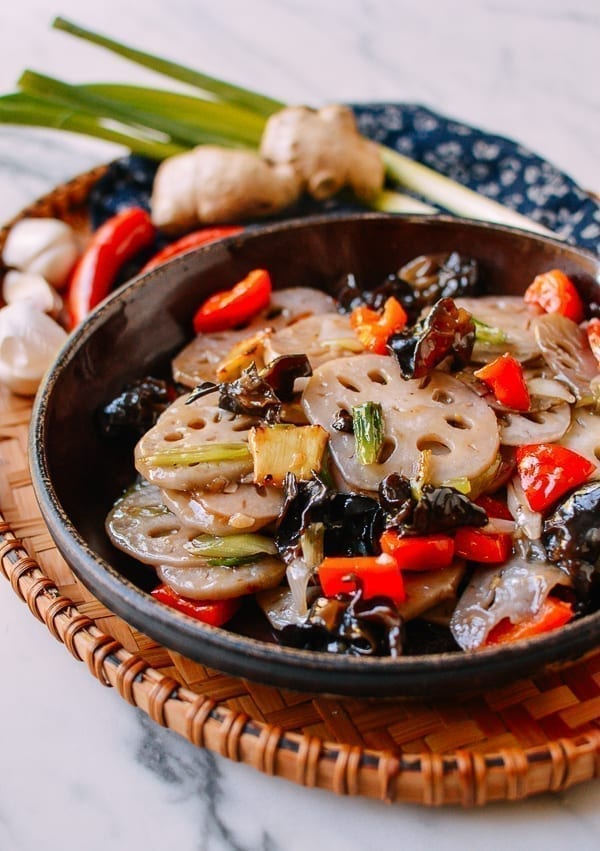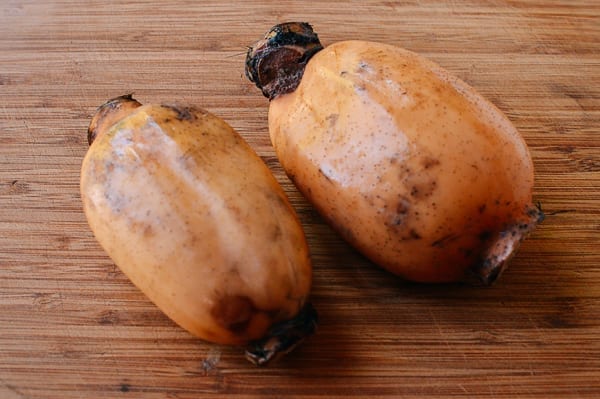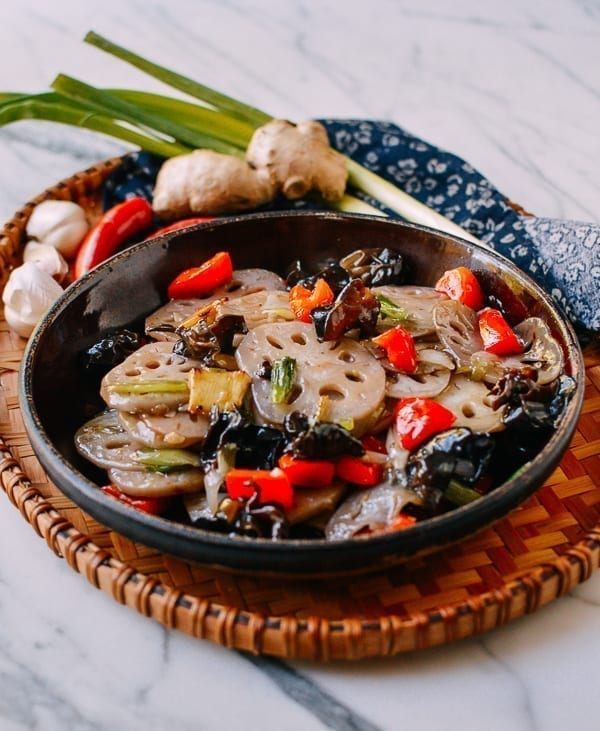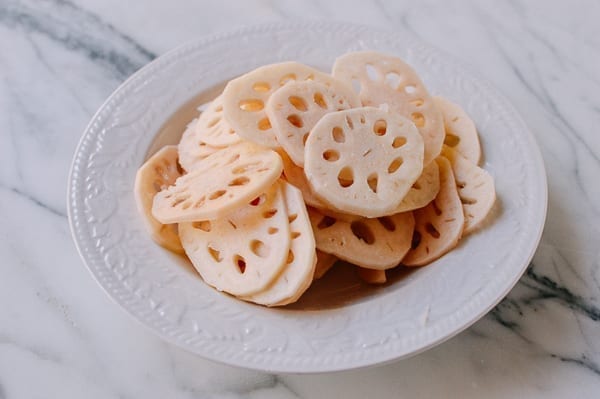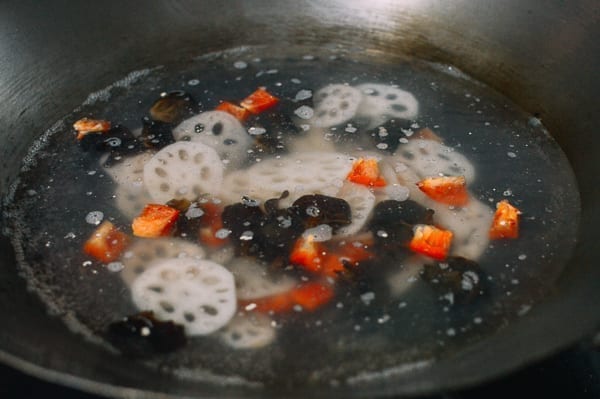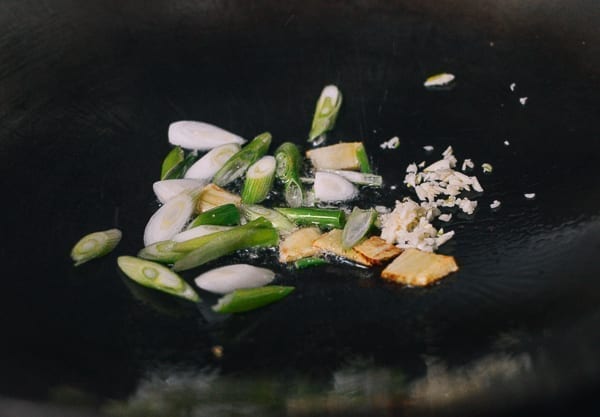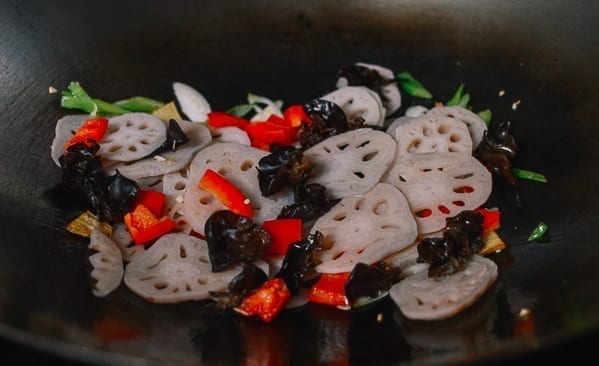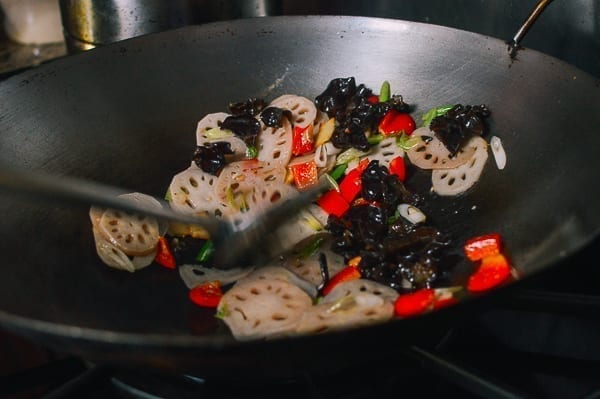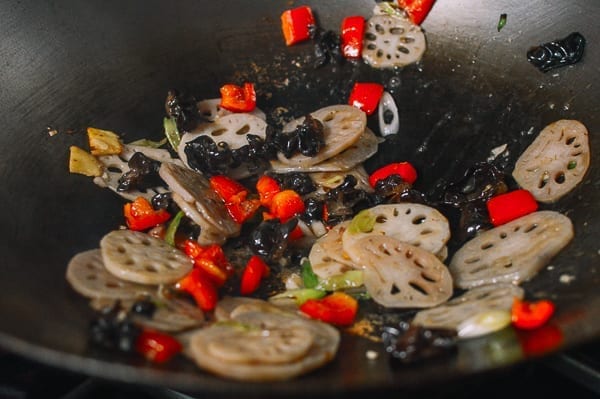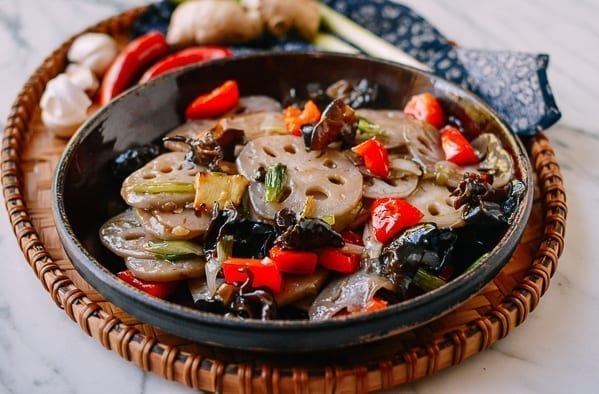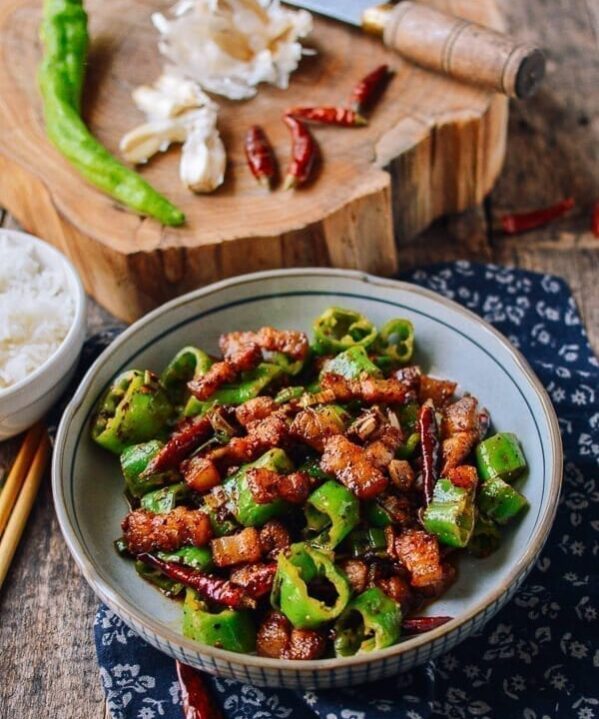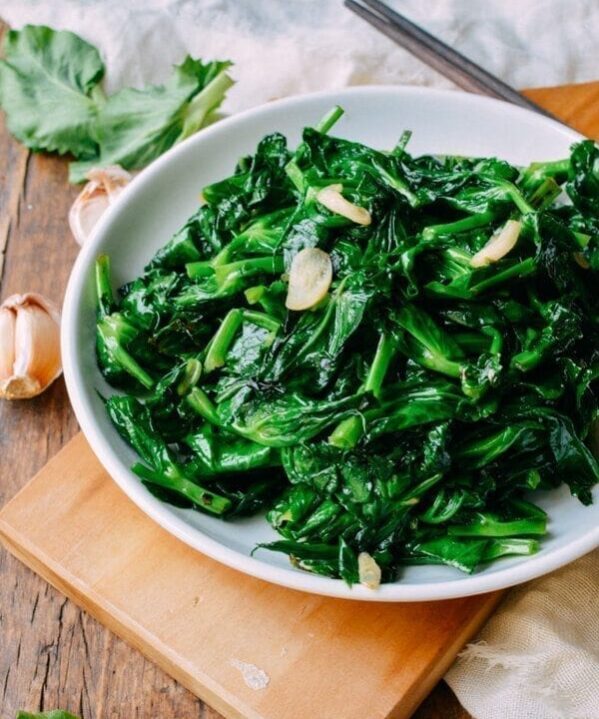This stir-fried lotus root recipe is one of my favorite vegetable dishes. If you’ve never tried lotus root, you’re really missing out! This lotus root stir fry recipe has a delightful mixture of textures and flavors, and it’s incredibly tasty considering how simple it is.
What is Lotus Root?
Lotus roots are the stem of the lotus plant. These stems can grow quite long underwater (several feet!), with segments that look almost like connected links of sausage. Harvesting lotus roots is a muddy and labor-intensive process, but the work is repaid with all of its healthy fiber and nutrients!
Lotus roots are one of the most loved vegetables in Asia, and in Chinese cooking. The lotus root’s texture is crunchy when stir-fried, soft and potato-like when boiled.
Where do you buy Lotus Root?
While lotus roots have yet to make it into mainstream American grocery stores, they are readily available in Asian markets. The segments of the long lotus stems are separated into more manageable pieces for sale. When selecting lotus roots, look for heavy, firm specimens with a fresh clean smell.
To prepare the root, simply cut off the ends and peel with a vegetable peeler. Then simply slice or dice to use in stir-fries and soups.
Our Lotus Root Stir Fry Recipe
Simple stir-fried lotus root is hard to beat as a vegetable side dish. Lotus roots have a very subtle sweet flavor that takes on the flavor of whatever they’re cooked in.
This recipe features a light but surprisingly flavorful sauce made with ginger, scallions, garlic, oyster sauce, an Shaoxing wine. Other simple ingredients like salt and sugar balance it out.
I also added wood ear mushrooms and red bell peppers to add color and additional texture to the dish. Serve this lotus root stir-fry alongside any main dish with rice, and you’ll have a very good meal.
Lotus Root Stir-fry: Instructions
Prep the lotus root by peeling them, trimming the ends, and thinly slicing them, until you have about 12 ounces (340g). Really make an effort to get thin slices! A mandolin is a handy tool to use for this if you have one. If not, simply use a sharp knife to carefully cut the lotus root into thin slices.
Bring a large wok or pot of water to a boil and blanch the lotus root, wood ears, and bell peppers for 45 seconds. Drain thoroughly and set aside.
Combine the chicken stock, oyster sauce, salt, sugar, and white pepper in a small bowl to create the sauce mixture and set aside.
Add the oil to the wok over medium heat along with the ginger. Cook for 30 seconds to a minute, and then add the garlic and scallions.
Cook for another 20 seconds or so, and then add the blanched vegetables.
Stir-fry the vegetables for 1 minute. Then add the Shaoxing wine around the perimeter of the wok, followed by the sauce mixture. Cook for 30 seconds, until the sauce is at a simmer. Stir your cornstarch and water mixture, making sure the cornstarch hasn’t settled and add it to the wok.
Stir-fry for another 20-30 seconds until the sauce coats the vegetables.
And serve!
Some of our other dishes using Lotus Root:
- Crispy Stuffed Lotus Root with Pork
- Ma La Xiang Guo (Spicy Numbing Stir-fry Pot)
- Lotus Root & Pork Soup
Lotus Root Stir-fry
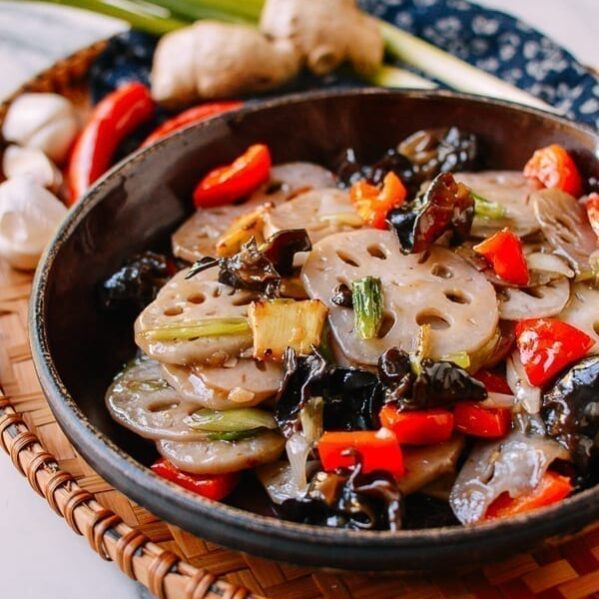
Ingredients
- 12 ounces lotus root (340g)
- 8 wood ear mushrooms (rehydrated and cut in half or thirds)
- 1/2 cup red bell pepper (cut into small chunks)
- 1/4 cup chicken stock
- 2 teaspoons oyster sauce (or vegetarian oyster sauce; can also use gluten-free oyster sauce to make this a GF dish)
- 1/4-1/2 teaspoon salt (or to taste)
- 1/4 teaspoon sugar
- 1/8 teaspoon white pepper
- 2 tablespoons oil
- 6 slices ginger
- 2 cloves garlic (minced)
- 2 scallions (white parts only, cut into 1-inch pieces)
- 1 tablespoon Shaoxing wine
- 2 teaspoons cornstarch (combined with 1 tablespoon water)
Instructions
- Prep the lotus root by peeling them, trimming the ends, and thinly slicing them, until you have about 12 ounces (340g). Also prep your wood ear mushrooms and bell pepper.
- Bring a large wok or pot of water to a boil and blanch the lotus root, wood ears, and bell peppers for 45 seconds. Drain thoroughly and set aside.
- Combine the chicken stock, oyster sauce, salt, sugar, and white pepper in a small bowl to create the sauce mixture and set aside.
- Add the oil to the wok over medium heat along with the ginger. Cook for 30 seconds to a minute, and then add the garlic and scallions. Cook for another 20 seconds or so, and then add the blanched vegetables.
- Stir-fry the vegetables for 1 minute. Then add the Shaoxing wine around the perimeter of the wok, followed by the sauce mixture. Cook for 30 seconds, until the sauce is at a simmer, and then add the cornstarch and water mixture, making sure the cornstarch hasn’t settled.
- Stir-fry for another 20-30 seconds until the sauce coats the vegetables, and serve.
nutrition facts
